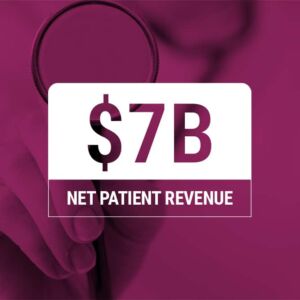One of the common definitions of insanity is “doing the same thing over and over and expecting a different result”
That definition came to mind after attending the National Association of Healthcare Revenue Integrity Symposium in Phoenix a few weeks ago. The event was well run, with expert speakers covering many critical revenue integrity issues, such as IPPS and OPPS annual updates, chargemaster maintenance, patient status, denials management, appeals and Medicare Fair Hearings, payer audits, value-based purchasing, utilization review (UR), and revenue cycle management strategies.
Unfortunately, I came away with one thought pertaining to the discussions around trying to ensure an optimized revenue cycle: been there, done that. The topics for driving improvement have been the same for at least the past decade: compliant coding, clinical documentation improvement, and denials management. The lack of significant change in the discussion means we have not done a good job solving any of these issues. When new rules and regulations roll in – quarterly or annually – we have new challenges in front of us – even though we haven’t resolved the old problems. Despite all the tools and technology now at our disposal, we’re still missing the target.
Positioning the revenue integrity department as a ‘connector’ is an important first step toward making real progress in the revenue cycle and compliance areas.
Just another silo
Many organizations have tried to address the issue of revenue optimization by establishing a revenue integrity initiative. The problem, in my experience, is that instead of revenue integrity departments serving as the ‘connective tissue’ – or umbrella organization – that unifies revenue improvement efforts, they have become yet another silo in the revenue cycle area. In spite of good intentions, revenue integrity has become another isolated function – sitting alongside, but still separate from – the patient access, mid-cycle, and back office components of the revenue cycle.
The result is a revenue integrity group struggling to prove its ROI, with limited scope and resources, sitting outside all three functions. This is the reason that, in far too many cases, the revenue integrity initiative has failed to become the hoped-for catalyst driving a unified revenue improvement program. This lack of empowerment has often led to an over-emphasis on the compliance side, which can sometimes cause revenue restriction, rather than enhancing revenue generation.
Turbocharging your revenue integrity program
There are four steps you should take to elevate your revenue Integrity program to its rightful place of uniting the revenue cycle and compliance teams to ensure an optimized revenue stream.
1. Unite your teams. Revenue integrity efforts will not succeed if they exist only “at the margins,” that is, isolated from the real action. Revenue integrity teams need to move to center stage where they can actively participate in and help drive much-needed change. The revenue integrity scope should be expanded to involve key stakeholders from multiple groups representing revenue cycle, finance, and clinical professionals. It should encompass clinical documentation, end-user monitoring and training, charge capture, coding, and denial avoidance. The revenue integrity function should be used to drive long-term corrective action on errors, and to take advantage of revenue-driving opportunities through continuous monitoring. This can only be done if the revenue integrity group is part of a unified team effort.
2. Analyze your data. With today’s EHR systems and other technologies, there is an increasing amount of data being generated every day, from every area in the organization. Focus on analyzing the relevant claims and remittance data to identify the root cause of issues and ferret out opportunities for revenue enhancement. There are tools available that can provide you with the ability to dig deeply into your billing data to uncover risks and deliver insights that can help you significantly improve your financial performance and minimize compliance risks. Leverage the capabilities these tools offer to continuously monitor the activity within your organization, and analyze the data that holds the answers to the challenges of balancing revenue enhancement with compliance.
3. Empower your teams. To energize your revenue integrity program, assign responsibility to specific individuals throughout the various functions of your organization. With responsibility comes accountability. To ensure that the key players are able to succeed, it’s essential to not only identify the specific errors and opportunities, but also the end users responsible. This enables you to provide real-time feedback and assistance regarding the cause, and implement corrective action to ensure the issue doesn’t arise in the future. Being proactive sends a message that you are continuously monitoring activity and will work with the individuals to resolve errors and take advantage of improvement opportunities. This should be done positively, with an eye toward helping them improve. Simply identifying the issue at a high level and providing a generic solution to the affected group – without assigning direct responsibility to the individuals involved – will not help you achieve your revenue integrity goals.
4. Train your staff. In many organizations there is significant staff turnover, especially within the revenue cycle and clinical teams. Mandatory training on prior trends – involving opportunities and errors – should be part of every new hire’s orientation. This training should be conducted on both the departmental and individual level for staff in all areas. An effective training program ensures that all team members have a clear understanding of the goals of the program, what is expected of them, and what they need to do to achieve success.
To make real progress in revenue integrity, we must re-evaluate what we have been doing. We have to regroup and understand that a siloed approach has not been effective. In general, most organizations understand the need for a unifying revenue integrity department, but have not truly committed to making it work. These teams need to be staffed and trained properly – and provided with the right tools to break out of their silos and drive real change. Positioning the revenue integrity department as a connector is an important first step toward breaking the cycle we’ve been in for the past decade – in order to make true progress in the revenue cycle and compliance areas.






